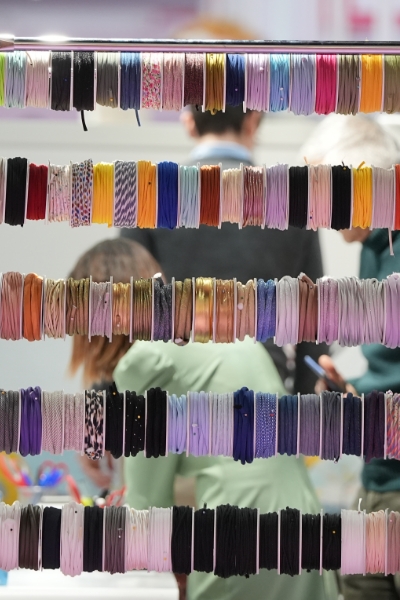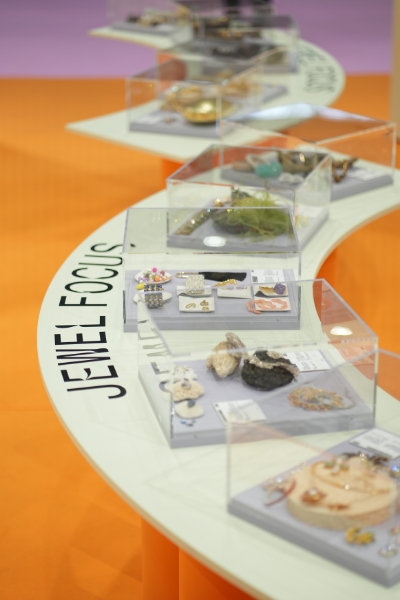Virtuous decorations: new sustainable solutions The - Denim Première Vision - Première Vision New York - Première Vision Paris
From everyday looks to evening pageantry, décor unfolds its thousand facets through a multitude of lower impact solutions. Jacquards, lace, embroidery, prints, sequins: the alternatives are revealed for fabrics that are as sumptuous as they are virtuous.
Renewal of materials

Printing fabrics are adopting reduced-impact materials.
Woven jacquards are made with GOTS-certified organic cottons, wools and silks, guaranteeing environmental performance throughout the development of the materials.
They also favor water-saving natural materials such as linen or hemp.
In a fluid version, motifs are drawn on responsible artificial materials. The traceability of resources is ensured by FSC or PEFC certification, to guarantee cellulosics that are not linked to deforestation. Transformation processes favor closed-loop processes and solvent reuse are a must, as with Tencel™ Lyocell, Ecovero™, Naia™, Birla Excel™.
To fit in with the circularity of resources, recycled cottons, reduced-impact viscoses, and polyesters recycled from pre- or post-consumer textiles, welcome placed or all-over patterns.
Embroidery and lace follow the same path, offering a new materiality to floral or graphic decors with organic cotton, traceable viscose or recycled synthetics.
Innovative fibers such as Spiber’s Brewed Protein™, developed by fermentation of plant-derived ingredients, offer a new playground for jacquard knits.
Ornaments and techniques revisited
Printing techniques are evolving with minimal use of water, such as the new generations of digital printing or high-fastness rinse-free pigment printing. Pigment prints are becoming a circular version, developed with wood waste transformed into high-performance pigments.
Flock prints reuse waste materials and adorn surfaces with flocked decors developed from organic cotton or cork production offcuts.
Stars of sparkle and festive looks, sequins have had to comply with microplastic regulations since the end of 2023, to avoid the risk of dispersion in the environment. Indeed, when they are made of synthetic polymers, their use is prohibited. As an alternative, glitter reveals its iridescent shades in acetate from sustainably managed forests, with reduced chemical impact.

